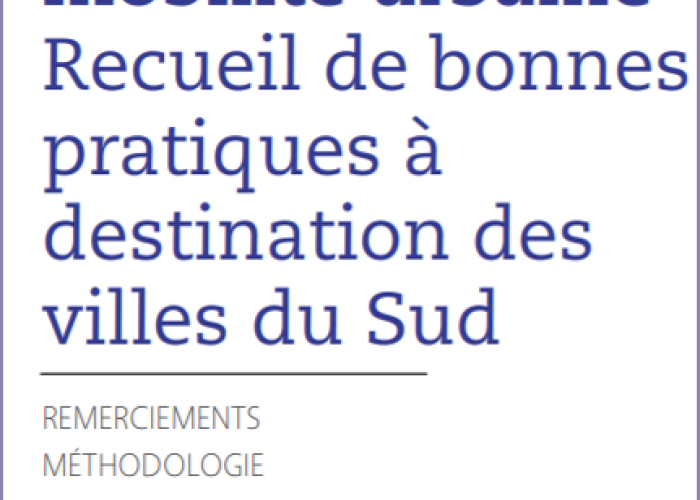French Experience in Urban Mobility - CODATU

L’expérience française en matière de mobilité urbaine : recueil de bonnes pratiques à destination des villes du Sud CODATU et AFD
- SUMP
Reports & Case Studies
Walker Oliver
Project Manager, Sustainable Transport
This report aims to provide a set of actions and checklist to help city decision makers, transport authorities and planners to rethink urban transport as a core component of their recovery plans and encourage them to address gaps and inequalities in their transport systems.
Cities are major economic and multicultural centres contributing to national and local economies. The impacts of the COVID-19 pandemic on the global economy have affected everyone and put many people at risk of falling into poverty. The pandemic has both reinforced and deepened many existing inequalities. As cities look to ‘build back better’ within a green and just framework, improving access to jobs, education, health, parks, cultural facilities and leisure will be a crucial element of the recovery.
This report aims to provide a set of actions and checklist to help city decision makers, transport authorities and planners to rethink urban transport as a core component of their recovery plans and encourage them to address gaps and inequalities in their transport systems. The rationale for such a reset is twofold. First, inclusive public transport systems deliver more equitable outcomes for everybody, not just the few. Second, cities with good walking and cycling networks and inclusive, robust public transport systems are more resilient due to the health, economic, environmental, and social benefits these networks provide(C40, 2020b; C40, 2021; World Bank, 2019). By addressing the transport needs of different groups, cities can boost social equity and their resilience to unforeseen shocks at the same time.
This guide looks at the different aspects and needs of those who are currently underserved and maps out the issues that these groups face as they move around the city. Furthermore, it sets out the case for leveraging actions within the project preparation cycle to reinforce both the societal and climate benefits for a city, outlining new opportunities for cities to become more inclusive.
You can find this report and further Zero Emission Bus resources from the C40 Cities Finance Facility (CFF) here.